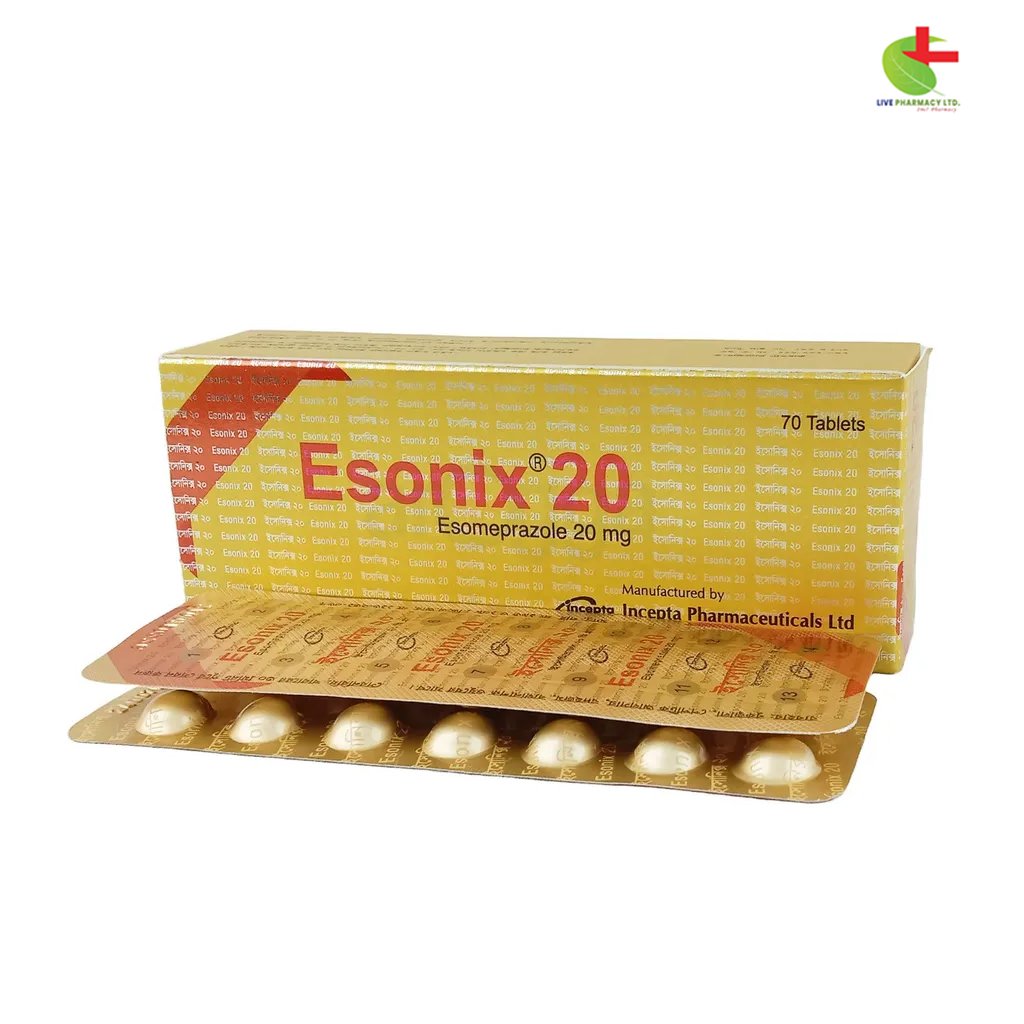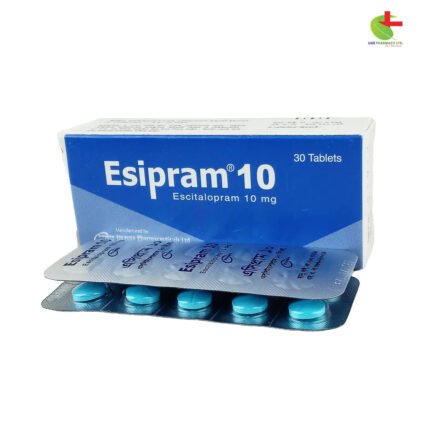Esonix 20
98.00৳ Strip
- Esonix is a proton pump inhibitor effective for chronic heartburn and GERD.
- It promotes healing of erosive esophagitis and maintains its healing.
- Used in combination therapy to eradicate Helicobacter pylori in duodenal ulcers.
- Provides superior acid control for relief from acid-related conditions.
- Always consult a healthcare professional before use.
 Brand
Brand
|
Incepta Pharmaceuticals Ltd |
|---|---|
 Generics
Generics
|
Esomeprazole |
 Type
Type
|
Tablet |
Indications for Use
Esonix is recommended for:
- Relief of chronic heartburn and associated symptoms of GERD.
- Healing erosive esophagitis.
- Maintenance of healing in erosive esophagitis.
- Combination therapy with amoxicillin and clarithromycin for eradicating Helicobacter pylori in patients with duodenal ulcers.
- Treatment of Zollinger-Ellison Syndrome.
- Management of acid-related dyspepsia.
- Treatment of duodenal and gastric ulcers.
Always consult a registered healthcare professional before use.
Pharmacology
Esomeprazole functions as a proton pump inhibitor, specifically targeting the H+/K+-ATPase in gastric parietal cells to suppress acid secretion. As the S-isomer of omeprazole, it offers superior acid control compared to traditional racemic proton pump inhibitors.
Absorption: Esomeprazole is available in enteric-coated capsules, reaching peak plasma levels approximately 1.5 hours post-administration. Bioavailability is about 90% after repeated daily doses.
Distribution: It is 97% bound to plasma proteins, with a steady-state volume of distribution around 16 L.
Metabolism: Esomeprazole undergoes extensive liver metabolism primarily via the CYP2C19 isoenzyme, resulting in inactive metabolites.
Excretion: The drug has a plasma half-life of about 1–1.5 hours, with over 80% excreted as inactive metabolites in urine.
Dosage
Oral Dosage:
- Erosive Esophagitis Healing: 20-40 mg once daily for 4-8 weeks. Additional treatment may be needed for non-healing patients.
- Symptomatic GERD: 20 mg once daily for 4 weeks, extendable if symptoms persist.
- Helicobacter Pylori Eradication: 40 mg once daily for 10 days, combined with amoxicillin and clarithromycin.
- Zollinger-Ellison Syndrome: 20-80 mg once daily, tailored to individual needs.
- Acid-related Dyspepsia: 20-40 mg once daily for 2-4 weeks.
- Duodenal & Gastric Ulcers: 20 mg once daily for specified durations.
IV Injection/Infusion: For adult and pediatric patients with GERD and erosive esophagitis or for ulcer management, dosing varies based on patient weight and condition.
Always follow the guidance of a registered healthcare professional.
Administration
Tablets/Capsules: Take whole, at least one hour before meals.
Oral Suspension: Mix contents with 15 ml of water, allow to thicken, and consume within 30 minutes.
IV Injection: Prepare by adding sodium chloride to the vial and administer over a minimum of 3 minutes.
Always consult a registered healthcare professional before use.
Drug Interactions
Esonix is primarily metabolized by CYP2C19 and CYP3A4. It has minimal interactions with other medications, but may affect drugs where gastric pH influences absorption.
Contraindications
Esomeprazole should not be used in patients with known hypersensitivity to its components.
Side Effects
Common side effects may include headache, diarrhea, nausea, and abdominal discomfort. Long-term effects mirror those observed in short-term use.
Pregnancy & Lactation
Limited studies exist on esomeprazole use in pregnancy. It is advisable to discontinue breastfeeding if treatment is necessary.
Precautions & Warnings
Monitor for potential gastric malignancies despite symptom relief with Esonix. Capsules should be taken whole, and alternative methods exist for those unable to swallow them.
Use in Special Populations
Pediatrics: Safety not established in those under 18.
Geriatrics: No significant differences in efficacy or safety noted.
Hepatic Insufficiency: Maximum dose of 20 mg for severe cases.
Renal Insufficiency: Expected pharmacokinetics remain stable.
Overdose Effects
No specific antidote for esomeprazole exists; treatment should be symptomatic and supportive.
Storage Conditions
Store below 30°C in a dry place, away from light and moisture. Keep out of reach of children.













Reviews
There are no reviews yet.